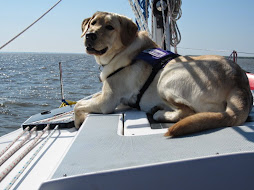Happy first day of winter! We’ve had mild weather in central
Pennsylvania so far, but it’s time to start thinking about cold weather safety
for our dogs. Here are 6 tips for having a safe winter with your dog.
Supervise your dog
around fireplaces. If you love a toasty fire on a cold winter day, be sure
to supervise your dog around the fireplace. Use a screen to protect your dog
from flames and soot.
Don’t leave your dog
alone in the car. In cold weather, cars can act as giant refrigerators, and
it can quickly become dangerous for dogs. If you’re running errands or
traveling, and you think you might not be able to take your dog inside with
you, it might be better to leave them at home.
Watch for frostbite.
Dogs can get frostbite, too. Watch for red, gray, blue, or whitish areas on the
nose, ears, and feet. Dogs may have fur coats, but if it’s cold enough that you
want to go back inside, it’s probably time for your dog to come in, too. And
remember, puppies don’t tolerate the cold as well as adult dogs do.
Be prepared for
winter storms. If a winter storm is predicted, make sure you have enough
dog food, fresh water, warm bedding, and any meds your dog is taking in case
you get snowed in.
Wear collars and ID
tags outside. Dogs can easily lose their scent in the snow and ice and may
not be able to find their way home if they get away. Every time you take your
dog outside, whether it’s on a leash or just in your backyard, make sure your
dog is wearing a collar and ID tags.
Wipe dog’s paws,
legs, and stomach. After spending time outside in the sleet, snow, and ice,
please remember to wipe your dog’s paws, legs, and stomach. This will remove
harmful chemicals, like antifreeze and salt. Also be sure to check between your
dog’s paw pads for ice balls and remove them.
If you have any other tips, leave them in the comments. Have
a safe and happy winter!











